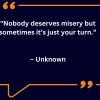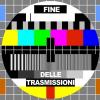Dear Mark Edmundson,
I read your article, “Poetry Slam,” in the latest issue of Harper’s and I’d like to respond directly to your “slam” of contemporary poetry by offering the same audience an alternative perspective:
Using only brief fragments of single poems from only 9 living poets (including 1 Canadian, 1 Irish, and 1 actually dead)(endnote 1), Mark Edmundson lambasts the current state of American poetry. I think it’s important to bring to the attention of a larger readership the recent misdirected and lazy criticisms lavished upon contemporary poets that distract from the depth, diversity, and relevance of the work itself. Yes, some readers actually seek out and find poetry that is intellectually, emotionally, and relationally vital.
There are two basic cause/effect accusations in “Poetry Slam” that are worthwhile to dissect to show the dubious connections and terrifying implications:
#1 Because contemporary American Poetry is too “hermetic,” “private,” “oblique,” “equivocal,” it consequently “has too few resources to take on consequential events”:
#2 Because Contemporary American poets lack “ambition,” they do not “light up the world we hold in common,” i.e. they don’t reflect my own worldviews that make me feel like there is a singular “fundamental truth of human experience.”
Unfortunately, what emerges in this article is a desire for singular type of poem. A poem that a) provides unique images that simultaneously relate to obvious cultural referents (“the TV show, the fashions, the Internet”), b) sublimates most poetic techniques to present direct arguments in the form of revelations c) that respond to “the events that began on September 11, 2001 and continue to this moment.” In sum, every poem should be a humanist poem of epiphany with blatant political/cultural references to post-9/11 living. Does this sound like a great way to enliven all American poetry to you?
While many wouldn’t bother, I want us to seriously consider these criticisms (as far as we can in a blog post) as well as confront the assumptions that they bring to the literary table. Ultimately, though, I want us to re-think the very questions being posed so that we can move past them to more productive conversations. While I’m not addressing all of the problems (some are too inane/insane to confront) in Edmundson’s article, by breaking down and reframing these 2 cause/effect arguments we can reorient ourselves as more culturally active citizens that embrace the multiplicity of contemporary poetry.
#1 Because contemporary American Poetry is too “hermetic,” “private,” “oblique,” “equivocal,” it consequently “has too few resources to take on consequential events”:
A) Let’s Question Why We Read The Way We Read
Many of the adjectives Edmundson conjures are a matter of opinion, I suppose, but I think that all of them stem from a particularly closed and surface approach to reading text. Let’s think about how we can approach reading so that we don’t so quickly blame the body of work we’ve just read for our frustration. We need to consider why we’re frustrated and where that feeling comes from.
Part of the challenge and pleasure of reading poetry is that it sets forth to offer the reader something radically new, and in turn, we have to re-train ourselves to read. Writing that tries to de-stable standards of normalcy cannot use the syntax, the language of this very normalcy. It is a language of fracture and fragment, a language that breaks down meaning to regenerate it, to reinvigorate it. A language that tries to collapse boundaries, to free us from constraints, to help us form new relationships with people, objects, places, time, and our own imaginations. As Lyn Hejinian writes, it’s a language that “invites participation.” I think it’s immensely important to take what we learn in daily life, whether that means our jobs, childrearing, conversations, or academic studies and experiment with how these histories and ideas can be explored creatively. It trains us to be open and active readers and to develop agency as thinkers and as citizens in this world.
I love this Stevens line that goes, “the life of the poem in the mind has not yet begun,” because I think it embodies the challenge and joy that many students face when they begin reading poetry. In high school or in their jobs, they’re often taught that there is a single answer they need to discover, that there is a singular and correct way of reading a text. Poetry can show students/readers that the pleasure of the text comes from reading it numerous times and each time, gleaning more nuanced and diverse meanings. That, yes, “the life of the poem in the mind” can blossom with the multiplicity of interpretation. Play with the poem and let the poem play with you.
B) Let’s Look at Ashbery, Who Edmundson Claims Has “No Precise Sense at All”
So, Edmundson, poets are “programmatically obscure” in their “opacity” and “evasion” and this prevents them from writing pieces that “take on consequential events”? Since Ashbery is one of the main poets he attacks with these umbrella terms, let’s discuss him a bit. Ashbery has published approximately 25 books of poems (not including re-prints, collections/selections, essays, or translations) and Edmundson quotes only two sentences of his entire oeuvre to assert, “Ashbery’s work is perpetually hedging.” It might be worth exploring what else, besides hedging, Ashbery is doing that has been brushed aside in the Trashbin of Opacity and Evasion. One of many angles into his work might be through how he questions the attributes attached to masculine stereotypes in literature and lived society with his gender-destabilizing pronouns, embrace of waste, and unexpected poetic source material. His poems shape a response to contemporary culture that repositions the male gender as observant, engaged, receptive to change, anti-authoritarian, anti-homophobic, and desiring of multivalency.
With the use of collage technique and unique choice of text-material for the basis of “Europe,” Ashbery’s first long poem in his second book, The Tennis Court Oath, challenges the hierarchical and authoritarian expectations of male gender norms. Unlike modernist male poets who quoted a myriad of foreign languages and included numerous references to other established literary traditions, and more similar to Moore, who incorporated mass media excerpts in her poems like Reader’s Digest and National Geographic. Ashbery embraces children’s literature as a genre acceptable to recycle in his own poetry (and he continues his interest with girl-focused sources, explicitly in his 1999 book, Girls on the Run). A book geared to young female audience, titled Beryl and the Biplane, is the textual material Ashbery chooses to manipulate for “Europe.” The juxtaposition between base-text (kid lit) and titular subject matter (the complex and daunting Europe) forces the reader to reconsider appropriate sources of authority that inform interpretations of a continent. The decision to consult and manipulate a book aimed at an audience of female children is an active rejection of more standard genres such as academic history books or European newspapers, usually controlled by and geared at men. Building his poem from the vocabulary directed at a younger audience also mocks and collapses hierarchy based on age and thus, paternal authority.
The one hundred and eleven sections evade a standard, masculine, linear narrative. “Europe” presents a fragmented and disjointed portrayal of people moving through an ephemeral, curdling landscape, a “strong, sad half-city,” where voices merge and scatter like “the noise of the engine in the sky” (97). This world, as a “war won out of cameos” (97) offers the reader images of jewels flung at blurred faces and politicians briefly appearing to announce victories for battles in which they didn’t directly fight. Unfurling with leaps and fractures, the poem rejects linearity as the undivided phallic, stable identity of heteronormativity. “Europe” ends with a complete refusal of linearity, lacking even punctuation to signify an end: “ slowly sweeping in a circle / the breath” (113). Ashbery leaves us without an escape-hatch: mid-action, devoid of a chronology that indicates a reliable or hopeful future. While Ashbery’s later poems abandon the collage approach, many of his books continue to embrace the plurality of ambiguous pronouns, perpetuate concentric, disruptive, and digressive movement in opposition with the inherently masculine sense of ordering and chronological representation, and undermine male-dominated capitalist culture through attention to its concurrent decay, waste, and by-products. Yes, I guess you could read this as “obscure” and “opaque” or we could read it at deliberate strategies that openly investigate social and “political issues” (which Edmundson demands are absent in current poetry). It’s hard for me to imagine how Edmundson could claim that Ashbery has “too few resources to take on consequential events.” Or, would Edmundson claim that the politics of gender, war, and patriarchy are not “consequential events”?
C) Why Are You Defining “Resources” Solely as Cultural Symbols or Name Brands?
For Edmundson, poetic “resources” are, surprisingly, “the icons of pop culture,” “ad-speak,” “rock lyrics” and “politicians’ posturing.” Edmundson confirms, “The TV shows, the video games, the ads, the fashions, the Internet, movies, popular culture: to read a good deal of contemporary poetry you would imagine these things never existed and don’t make up our collective environment.” One implication I simply won’t engage here is that all poetry should be continually tackling unnamed “consequential events.” I mean, is there a list of approved “consequential events” that a poet must choose from in order to create an ambitious poem? Why not provide the list, then? Another strange implication here, that is a little more worth discussing, is that to write about “consequential events” poets must directly reference brand names, icons, etc. to situate the reader in the contemporary.
I think a basic assumption about poetry or literature at large is that it purposefully uses certain linguistic devices and conceptual strategies to investigate life/history/space/time. Referencing Coca-Cola or mentioning Benghazi are not the only way to address the present moment (let’s just ignore Edmundson’s demand that poetry solely be about contemporary life). Enjambment, juxtaposition, alinearity, ungendered pronouns, fragmented phrases, absurdist sequences (etc) could all confront some of the hallmarks of postmodern American life (for example: flexible accumulation; vertical disintegration leading to financial centralization; and an increase in consumption represented not only by the “mobilization of fashion en mass,” but by a turn toward the “consumption of services” in addition to tangible goods) (endnote 2). As a starter, I recommend to Edmundson that he reads State of Union: 50 Political Poems, an anthology from Wave Books that might help him re-think alternative ways to confront “our collective environment.” This anthology includes a wide range of writers like John Ashbery, Anselm Berrigan, Juliana Spahr, John Yau, Mathias Svalina, and Lucille Clifton.
But even if Edmundson doesn’t want to think about “alternatives,” let’s actually consider some poets who do directly reference the “resources” he mentions. He could dip into the genre of poetry called Flarf. This poetry uses the Internet as a practice to generate work, and he could look at books by Nada Gordon or K. Silem Mohammad or simply check out the July/August 2009 issue of Poetry Magazine, which has a special section dedicated to this genre. If Flarf is not for him, he could try Conceptual Poetry. What about Kenneth Goldsmith’s book, Day? This book actually transcribes The New York Times from September 11, 2001. I am surprised Edmundson did not mention this book. Or how about Documentary Poetics, which calls into question the boundaries between fiction/nonfiction, objectivity/subjectivity, and the private/public through incorporating advertisements, legal transcripts, reportage, and even warnings on medicine bottles enact the materiality of social speech. Try CD Wright’s One Big Self or Brenda Coultas’ A Handmade Museum. Other poets deeply engaged with our contemporary lexicon are Sueyeun Juliette Lee, (That Gorgeous Feeling) Sampson Starkweather (The First Four Books of Sampson Starkweather), Arianna Reines (Mercury), Joe Wenderoth (Letters to Wendy’s) Sommer Browning (Either Way I’m Celebrating).
I recently reviewed Carmen Giménez Smith’s The City She Was, and I think this title thoroughly immerses the reader in pop culture, politics, commodification. Here is the first paragraph of the review: We have the terror of collectivity. And then we have the joy of collectivity. Carmen Giménez Smith reminds me that frenemies lurk around the Hard Rock Cafés of any city. But she also reminds me that we don’t have to go to the mall alone to pierce our ears and I’m relieved. And when we return to our homes and look at our freshly pierced ears in our solitary mirrors, Giménez Smith’s poetry forces me to confront the fallibility of the self, how “the houses project their occupants.” Her poems are riddled with both acerbic acceptance and sincere longing for transformation, so they live in a constant or conflicted state of attentive revision. She writes: “We’ll live off the grid. We’ll live sort of off the grid and spend too much money on organic marmalade.” She writes: “Some of it will be true and some of it will test what we know.” Giménez Smith’s newly released fourth collection of poetry, The City She Was, tests what we consider comfort, how we approach or appreciate disguises, how we recognize forgiveness, and whether smugness is our nation state.
2) Because Contemporary American poets lack “ambition,” they do not “light up the world we hold in common,” i.e. they don’t reflect my own worldviews that make me feel like there is a singular “fundamental truth of human experience.”:
A) Let’s Deal with The Conflation of Ambition and American Humanism
Oh dear. Edmundson conflates ambition with some sort of American humanism. While Edmundson admits that “any modern poet who thinks of [her]self as creating a full-scale map of experience would be dismissed as hubristic” he also demands that this same poet “must be willing to articulate that what is true for her life is true for all.” This is the only way to be ambitious (and what is ambition, anyway?)?
First, we need to ask why confirming the readers’ worldview or confirming some universalism is fundamental to good poetry. Edmunson begins his article by applauding Lowell’s content, “He was calling things as he believed them to be not only for himself but for all his readers. And he was looking into the future.” In a world that is growing increasingly diverse, why would we seek out writers that homogenize both the vibrancy and the conflicting perspectives that compose our daily habitat? I called out to poets on Facebook for their immediate reactions to this conflation and here are a few of the responses I received:
from Kathy Goodkin: “How about the ‘ambition’ of contemporary American poets to assert that ‘human experience’ can't and shouldn't be homogenized, that a voice constructed from a cultural lexicon of privilege can't speak for the multiplicity of lived experiences? That if we make assumptions about ‘the world we hold in common’ we neglect to honor all the ways we differ, the varied kinds of meaning-making in which we engage?”
from Jonathan Minton: “I think Edmundson might have it backwards. I just finished reading Cole Swensen's Gravesend and it struck me as very ambitious precisely because it explores the uncommon and uncanny that's buried in our histories and our language.”
from Christopher Kondrich: “Edmundson's sense of ‘ambition’ seems to stem from a lack of ambition on his part. Striving towards ‘common’ ground and universal humanity through poetic eloquence is all well and good, but this is reductive and restrictive to the polyphony of idiosyncratic voices that makes contemporary poetry so startlingly alive. This polyphony of voices also performs an all-important questioning of what ‘common’ means, a necessary performance indicative of a world far more diverse than Edmundson cares to admit. Resultantly, Edmundson's ‘ambitious’ poetry would get terribly dull with such a limited view of humanity. It also speaks to the notion that poetry is only necessary when the common reader needs revelation, which should not be limited to times post-trauma. Poetry is needed to address the trauma of everyday life, a trauma too menial for Edmundson, too uncommon to the ‘common’ Edmundson has in mind.
from Cynthia Arrieu-King: “I think the new ambition has been to capture multiplicities as the new common experience. This is on-going and difficult and creates a sense of people being on the inside and the outside, which means the project has failed or is failing but doesn't mean it isn't going to be achieved.”
From Sueyeun Juliette Lee: “"Ambition" and poetry are antithetical. To me, ‘ambition’ suggests either socially upward desires (which means colluding with status quo structures of things) or some devotion to "greatness" that needs to be examined.”
Edmundson blames Theory for the reason poets are afraid to use “we”—that they are afraid to speak for everybody. I’m not going to launch into a criticism of humanist thinking, but I hope the above comments might get at why actual, living, contemporary poets are wary of Edmundson’s “universal we.” Why is he afraid to bring diversity to the foreground, to explore variance and expand who/what the “we” encompasses.
B) Edmundson Believes that A Lack of Ambition Is Due to Poets Focusing Too Much on Developing a Unique Voice
Edmundson does seem to recognize that we’re living “At a time when collective issues—communal issues, political issues— are pressing.” Yet, he believes that “our poets have become ever more private, idiosyncratic, and withdrawn” because “[they] put all of their energy into one task: the creation of a voice. They strive to sound like no one else.” Holy moly, there is a lot to parse here and I can’t address it all but we can consider a few things.
First, we don’t tend to criticize American fiction or nonfiction writers who have a distinct “voice” (by “voice” I assume Edmundson means something like tone/style/pattern of syntax): Faulkner, David Foster Wallace, Joan Didion, Baldwin, Pynchon, Ellison, Junot Diaz, Toni Morrison, Donald Barthalme. Usually this is why we gravitate toward the writer, because their writing has various identifiable distinctions. So I’m not entirely sure how this is a valid argument?
Second, nor do I understand how any of these writers would then produce inherently “private” or “withdrawn” work. This is a bizarre conflation.
Third, I also think that “private” and “withdrawn” might be code for “complex syntax or unexpected metaphors” (let’s not forget that Edmundson attacks Ashhbery for being too academic when personifying a city, “cities grew out of loathing / Into something forgetful, although angry with history”). Ultimately, Edmundson keeps prioritizing certain aspects of poetry over others and in the process, forgets or does not understand that these elements are constantly working together in shifting ratios. An argument can be made through syntax, tone, and enjambment. These techniques do not inherently hide or dilute argument, they can be fundamental to how an argument is created.
Let’s add a third argument of Edmundson’s to the discussion. Originally I avoided it because it seems vague and uneducated. #3: Our “prominent American poets” write in a “bland, circumscribed mode.”
There are a few ways to approach this. One would be to create a rather sad analogy: How often, in the music industry or visual arts do we turn to people in their 50s and 60s for innovation (i.e. anti-blandness, unpredictability)? What I mean is, you don’t have to look toward the established for the new, when there are hundreds of independent presses in America publishing startling books every day by talented writers. Instead of HarperCollins or Penguin, try Octopus Books, Black Ocean, Ugly Duckling Presse, YesYes Books, Subito Press, Factory Hallow Press, Noemi Press, LetterMachine Books, Bloof Books, and Birds LLC. Instead of The Southern Review or Threepenny Review you could check out any one these journals: jubilat, DIAGRAM, typo, Banango Street, The Chicago Review, Tin House, Black Warrior Review, notnostrums, The Volta.
Another less quippy response would be to acknowledge that the very few poets Edmundson focuses on like Pinksy and Graham might, in fact, not be the most interesting poets out there. I want to point you, the reader, in the direction of more “established” poets who do continue to evolve as innovators. Try Alice Notley, Ann Lauterbach, Peter Gizzi, Elizabeth Willis, Bin Ramke, Mei-Mei Berssenbrugge, Keith Waldrop, Rosmarie Waldrop, Arthur Sze, Joshua Clover, Harryette Mullen, Anne Waldman, Eileen Myles, Lyn Hejinian, Eleni Sikelianos, and Bernadette Mayer.
OR what about: Here are the names of other poets who use alternative “resources” and are making starling contributions to American contemporary literature: Heather Christle, Jennifer Denrow, CA Conrad, Cynthia Arrieu-King, Shane McCrae, Kate Greenstreet, Timothy Donnelly (end note 3).
By focusing on a particular vein of “mainstream American poetry,” Edmundson does not destabalize and reorient a readership away from “poets who now get the balance of public attention,” the same poets he accuses of “casting unambitious spells.” In fact, this article does not let him escape these poets. So, let’s offer the public more poets that they can pay attention to that are casting ambitious spells. Let’s look at those spells. As an editor of the Denver Quarterly, I look for poetry that surprises me and that I hope will encourage our readership to view the world slightly differently, with a slightly altered sheen, when they finish reading the issue. Stein asserts that “words have the liveliness of being constantly chosen,” and I think that as readers we must not forget we, too, have a choice in the depth we bring to contemplating those words.
So Where Do We Go From Here?
A) Let’s Re-Think The Questions We’re Asking about Poetry!
I think that the authors of articles like this ask misguided questions because it is easier to light a straw man on fire (poetry) than try to extinguish the flames of burning haystacks (our education system or the value we place on deliverability/economic gain as opposed to, say, the value of reflective thinking). Might it be more productive to question why so much of the American population seems averse to complexity? Why are our youths not developing the critical thinking skills and the excitement to engage work that asks them to question their positioning in the world or to investigate their relationship with objects, people, places, assumptions, emotions, etc? Why did Obama in his State of the Union address only mention supporting the math and sciences programs in our education system and what does this say about our priorities as a country?
B) What If Magazines/Newspapers with Wider Audiences Print More Poetry Along Side Their Other Contents?
There are a number of magazines/newspapers that publish short stories or excerpts from forthcoming novels (or review said novels and short stories) while ignoring poetry. Do you not trust your readership to understand the complexity and, if so, why not situate your self as a magazine that encourages and facilitates your readers to encounter such complexity? The Boston Review does this incredibly successfully. Instead of occasionally publishing articles that attack poetry, why not solicit an article about the thriving, diverse poetry communities in New York City, Denver, Los Angeles, San Francisco, Tucson or many other cities across America? Why not offer a column in each issue that takes an innovative contemporary poem and asks a different poet or critic to discuss its multilayered interpretations/meanings? Basically, why discourage readers from a genre of writing that they are unfamiliar with before they have made up their own minds about it when you, yes you, have the opportunity to expose readers and invite them into this conversation.
C) What If, Complexity and Critical Thinking Aside, We Just Enjoy Whatever Parts of the Poem We Enjoy?
What I mean is, you don’t need to read a poem multiple times. You can read it once. You can read it once and feel like you understood it or NOT feel like you understood it. You can read it again if you want to, but you don’t have to. You can read it and fall in love with a single line and ignore the rest. That’s okay. I love this Gwendolyn Brooks line “a girl gets sick of a rose,” I love this Zachary Schomburg line “what I plant I bury,” I love this line by Jennifer Denrow, “You were the white field when you handed me a blank sheet of paper and said you'd worked so hard all day and this was the best field you could manage,” and this line by Seth Landman, “What is good? My curiosity sways on an island with sounds,” I love this line by Elizabeth Willis, “I swim to shore everyday.” I love these lines for many different reasons. They make me feel something. They make me think about language. They make me think about human potential and human fallibility. Like there is no “right” way to write a poem, there is no “right” way to find pleasure in reading a poem. When I go to a museum and stand in front of a Jasper Johns painting or a Rothko, I don’t pretend to understand all of its meanings or implications—but that doesn’t make me afraid or bitter. I might come back and sit in front of it again, and see if I glean something new or different. Or I might not. I’ve gained something from the experience, and it’s okay if that “something” is indefinable. As Sommer Browning writes, “either way I’m celebrating.”
Edmunson has a new book coming out titled Why Teach? and I am both curious and terrified to see what reasons he suggestions. The tone of his article is belittling in both its vague generalizations and lack of true engagement with contemporary poetics. His article advocates for a poetry that is easy to understand, an accessibility that curtails the triumphs of our imagination. His article advocates for a poetry that speaks for us all. His article advocates for a poetry that confirms our beliefs instead of challenges us. He gives us the green light to seek out validation as readers while actively negating ourselves as diverse, critical, and imaginative thinkers. Why teach? Well, I teach so that our students learn to be more self-reflective and to question texts, facts, and each other; I teach so that our students learn to write and verbally communicate cogently, confidently, and with originality; I teach so that our students gain a stronger sense of agency and will not be afraid of textual or philosophical innovation. And I write poetry and edit poetry journals with the hope that there will be a growing community of readers who recognize the liveliness, strangeness, and imaginative possibilities of the work available to them.
I realize that the above statement is a bit of a low blow toward Edmundson and those who easily agree with him. I actually think this response, though, goes easy on him. If this article was published somewhere else, maybe to an audience of poets, it wouldn’t be worth responding to. However, because many of the people who will read “Poetry Slam” do not read a wide variety of contemporary poetry (at least not in Harper’s) and this article does not recommend any (other than Tony Hoagland—a straight, white male), it seems worthwhile to get at the larger concerns. The aim of this response is not to blame anyone person or any institution per say (my own background with an MFA and PhD in Literature does not position me as the ideal person to discuss Late Capitalism or even the specific pitfalls of our K-12 and higher education systems). I do hope to nudge us toward having many conversations about resistance toward complexity (What about McDonaldization of Society?), why we want poetry to function in a certain way, and what pleasures we can derive from expanding the list of authors we read. I would like this to be a conversation with educators, politicians, scientists, marketers, artists of all mediums, with you and you and you.
Edmundon, like a small boy locked out of a warm house, feels shut out of contemporary poetry. Maybe he holds the wrong key. A key that turns all poetry into “poetry of our climate” only if it speaks in the plural, with commodified symbols of our society, to directly address post 9/11 issues. But the door is not locked. Please enter. Together we can re-think the diverse “our” of our climate and the myriad ways we can engage the imagination.
Yours Sincerely,
Julia Cohen, PhD
Associate Editor, Denver Quarterly
















